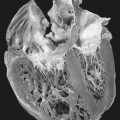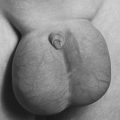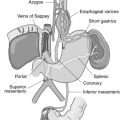75. Recurrent Respiratory Papillomatosis
Definition
Recurrent respiratory papillomatosis (RRP) is a manifestation of infection by the human papilloma virus (HPV) anywhere within the entire respiratory tract/system, from the nose into the lungs.
Incidence
Age distribution of RRP is bimodal. The most common presentations are in children younger than 5 years, juvenile-onset recurrent respiratory papillomatosis (JORRP), or in adults in the fourth decade of life, known as adult-onset recurrent respiratory papillomatosis (AORRP). Children 14 years old or younger average 4.3 cases per 100,000 of the population. Adolescents 15 years to adult average 1.8 cases per 100,000 of the population.
In JORRP, males and females are affected equally. In AORRP, males are affected more frequently in a ratio approaching 4:1. RRP also seems to appear more frequently in Caucasians than other races.
Etiology
RRP is caused by the human papilloma virus (HPV), usually HPV-6 or HPV-11 variants. The HPV-16 or HPV-18 variants are the causative agents in rare cases.
JORRP is typically transmitted from the infected mother during the perinatal period, most commonly during vaginal delivery. JORRP produces a more severe disease than AORRP.
AORRP’s mode of acquisition is not known with certainty, but it is strongly suspected to be via sexual transmission.
Signs and Symptoms
• Choking episodes
• Cough
• Dyspnea
• Failure to thrive
• Foreign body sensation
• Hoarseness
• Inspiratory wheeze
• Stridor
• Voice/vocal change
• Weak cry
Medical Management
Medical management of RRP consists almost entirely of surgical intervention. Pharmacotherapy is not a curative intervention but rather is intended to slow the growth of the HPV-produced papillomas and thereby extend the time between surgical debulking procedures. Pharmacologic agents with demonstrated effectiveness in increasing the intervals between resection or debulking include intralesional cidofovir, indole-3-carbinol, interferon, and photodynamic therapy. Other pharmacologic agents that have variable effects on RRP include cimetidine, acyclovir, and retinoic acid.
Curative intervention for RRP involves multiple surgical interventions (i.e., surgical debulking or resections). These procedures are performed with either the carbon dioxide laser, microdebridement, or cryotherapy. Frequently the resection is immediately followed by an injection into the resection site of cidofovir.
Microdebridement is preferred to laser debridement. The advantages of microdebridement include reductions in operative time, risk of infection for operating room personnel, and potential of airway burns. For laser resection, the carbon dioxide laser is preferred and affords better hemostasis during the operative procedure.
Photodynamic therapy has been the subject of small clinical trials. Results thus far show a reduced rate of papilloma formation. In this treatment method, dihematoporphyrin ether is administered 2 to 3 days before surgery. The therapy is accomplished by delivering an argon beam to the infected area either by laryngoscope or bronchoscope.The argon light activates the drug.
The airway of the patient with RRP should be repeatedly evaluated. For the newly diagnosed patient with RRP, the evaluations may be as frequent as every 2 to 4 weeks.
Complications
• Airway fire
• Airway/pulmonary burns
• Anterior glottic webbing or stenosis
• Negative-pressure pulmonary edema
• Pneumothorax
• Posterior glottic stenosis
• Solid or cystic pulmonary masses
• Subglottic edema
• Subglottic stenosis
• Tracheal stenosis
Anesthesia Implications
The first, and probably most critical, concern for the anesthetist caring for the patient with RRP revolves around securing the patient’s airway. HPV papillomas in the respiratory tract may be found anywhere from the nose to, and into, the lungs. Most are found in the oropharynx, epiglottic, and glottic areas. With the patient awake, muscle tone may maintain an airway that is functionally adequate but quite tenuous. Induction of general anesthesia, with or without muscle paralysis, or even provision of a moderate degree of sedation may reduce the patient’s muscle tone to the point of complete obstruction. The patient may become a “can’t ventilate/can’t intubate” patient almost instantly. Attempts at direct laryngoscopy must be undertaken with extreme caution; ideally, laryngoscopy should be delayed until the patient’s airway reflexes are sufficiently suppressed, all the while striving to maintain spontaneous ventilations by the patient. Despite the apparent contradiction, this can be accomplished with a slow, careful, deliberate inhalation induction utilizing sevoflurane. If the patient is a small child, particularly one with stridor while at rest, the anesthetist should opt for an awake intubation. Intubation, whenever necessary, should be carried out with a smaller than usual endotracheal tube. Because of the high probability of papillomas in the oropharynx and the friability of those papillomas, the use of a laryngeal mask airway is best avoided.
Because of the close proximity of the surgical site to the patient’s airway, whether natural or artificial, an airway fire is always a very real potential hazard. Airway fire can be particularly devastating and potentially fatal. The anesthetist must strive to use the lowest fraction of inspired oxygen possible, on the order of 0.25% to 0.35%, where feasible. The fraction of inspired oxygen should be reduced using helium (Helox) or nitrogen, but nitrous oxide should be avoided because it, too, supports combustion. The airway should be secured with either a special, laser-safe endotracheal tube or with an endotracheal tube wrapped with a reflective material, such as aluminum foil, to reduce the possibility of tube puncture and initiation of combustion. In the event of an airway fire, extinguishing it is the first priority. The steps to follow in the event of an airway fire are as follows: the endotracheal tube must be clamped, the balloon deflated, the tube removed, the patient ventilated by mask, and the airway inspected via direct laryngoscopy. After these steps have been completed, the patient should be re-intubated if possible or the patient may require tracheostomy to secure the airway. The lower respiratory tract should be inspected via bronchoscopy and any visible debris removed, which may require bronchial lavage. The degree of pulmonary dysfunction produced by the thermal injury should be assessed by obtaining an arterial blood gas sample. The anesthetist may need to initiate supportive pharmacologic treatment in the form of corticosteroid(s) and antibiotics, plus racemic epinephrine combined with highly humidified oxygen. The surgical procedure will have to be terminated immediately with the exception of any necessary hemostasis.
Patients with RRP should remain intubated after the surgical procedure has been completed until their airway reflexes have fully returned, even in uncomplicated cases. The patient should not be extubated until fully awake because of the high potential for postoperative airway edema and compromise. For this same reason, the patient should receive humidified supplemental oxygen and be closely monitored postoperatively.







